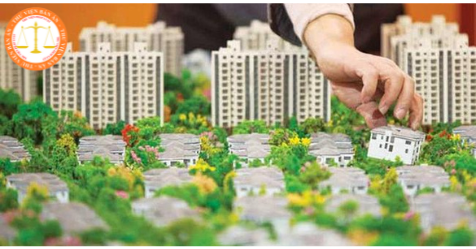Classification and identification of soil types

1. Bases for determining the types of land
According to Article 11 of the Land Law 2013 of Vietnam, land is determined on the following grounds:
- Certificates of land use rights, certificates of ownership of houses and land use rights issued before December 10, 2009; Certificates of land use rights, ownership of houses and other land-attached assets;
- Papers on land use rights specified in Clauses 1, 2 and 3, Article 100 of the Land Law for cases where the certificate has not been issued
- Decision on land allocation, land lease, permitting the transfer of land use purposes of competent state agencies in case the certificate has not been issued
- In case there is no papers specified in the above sections, the determination of the type of land shall comply with the Government's regulations.
2. Classification of soil types
Based on the purpose of use, the land is classified into three major groups as follows:
– First group: Group of agricultural land, including:
+ Annual planting land includes rice land and other annual planting land.
+ Perennial crops
+ Land for production forests
+ Land for protection forests
+ Land for special-use forests
+ Aquaculture Land
+ Land for salt production
In addition, there are some other types of agricultural land including land used for the purpose of building greenhouses and other types of houses for cultivation purposes, including cultivation forms where these forms are not directly on the land; land used for the purpose of building cattle and poultry farms and other animals permitted by law; cultivation, breeding and aquaculture land for the purpose of learning, research and experimentation; seedling nursery land, seedlings and flowering land, ornamental trees are also agricultural land.
– Second group: Non-agricultural land group:
+ Residential land includes land in rural areas and land in urban areas.
+ Land for construction of agency headquarters.
+ Land used for national defense and security purposes.
+ Land for construction of non-business buildings includes land for construction of headquarters of non-business organizations; land used for the purpose of building cultural, social, health, education and training, sports, science and technology, diplomacy and other non-business facilities.
+ Non-agricultural production and business land includes land for industrial parks, industrial clusters, export processing zones; commercial and service land; land for non-agricultural production establishments; land used for mineral activities; land used for the purpose of producing construction materials and pottery.
+ Land used for public purposes includes traffic land (including airports, airports, inland waterways ports, maritime ports, railway systems, road systems and other transport works); irrigation; land with historical – cultural relics, scenic spots; land for community activities, public entertainment and entertainment areas; land for energy works; land for postal and telecommunications works; market land; land for waste dumps, waste treatment and other public works.
+ Land for religious and belief establishments.
+ Land for cemetery, graveyard, funeral home, crematorium.
+ Land for rivers, rivers, canals, streams and specialized water surface.
+ Other non-agricultural land includes land for working houses, tents and camps for employees in production establishments; land for construction of warehouses and houses to store agricultural products, pesticides, fertilizers, machinery and tools for agricultural production and other construction land of land users not for business purposes that are not attached to residential land.
– Third group: Unused land groups include land types that have not yet determined their use purposes.
3. Comparison of agricultural land and non-agricultural land
Agricultural land and non-agricultural land are the two most common types of land today. So how are these two soils different? What are the rights and obligations of users of two types of land? Let's look through the table below:
| Target |
Agricultural land |
Non-agricultural land |
|
Form of use: |
Land allocation without payment, land allocation with payment, land lease. => Mostly land allocation without payment |
Land allocation without payment, land allocation with payment, land rental... => Mainly land allocation with collection
|
|
Classify |
Including the following soils: - Annual planting land includes paddy land and other annual planting land; - Perennial crops; - Land for production forests; - Land for protection forests; - Land for special-use forests; - Aquaculture Land; - Land for salt production; - Other agricultural land.
|
Including the following soils: - Residential land includes residential land in rural areas, residential land in urban areas; - Land for construction of agency headquarters; - Land used for national defense and security purposes; - Land for construction of industrial works; - Land for non-agricultural production and business - Land used for public purposes; - Land on the basis of religion or belief; - Land for cemeteries, graveyards, funeral homes, crematoria; - Land for rivers, rivers, canals, streams and specialized water surface; - Other non-agricultural land.
|
|
Use purpose |
Used for the purpose of production, farming such as planting crops, aquaculture, food. |
Used for housing, building houses, other works serving the life of the people. |
|
On the change of land use purpose |
Agricultural land, when eligible, can be converted for non-agricultural use, and used for residential use. It is also possible to convert agricultural land with this purpose to agricultural land used for other purposes. |
No transfer of land use rights shall take place. |
Please Login to be able to download





